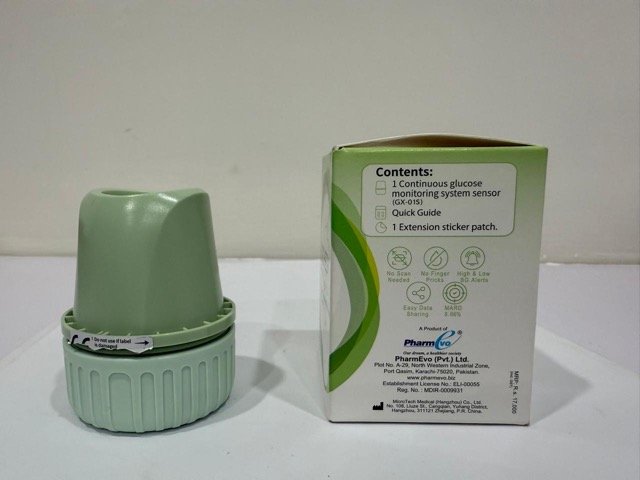Bexagliflozin is the latest of the SGLT2 Inhibitors to be approved by the FDA for the treatment of Type 2 Diabetes. It is a weaker SGLT2 Inhibitor compared to Empagliflozin and Dapagliflozin and is not superior to these SGLT2 Inhibitors in terms of cardiac and renal benefits.
Bexagliflozin FDA Approval:
On January 20th, 2023, the Food and Drug Administration gave approval to a new medicine called Brenzavvy (bexagliflozin) for type 2 diabetes. It falls under a group of drugs known as SGLT-2 inhibitors, which help in removing extra glucose (sugar) from the body by urination.
Indications and Usage of BRENZAVVY (Bexagliflozin)
BRENZAVVY is a medication that helps control blood sugar levels in adults who have type 2 diabetes mellitus. It is taken along with a healthy diet and regular exercise routine.
Limitations of BRENZAVVY
While BRENZAVVY can help those with type 2 diabetes, it is not recommended for those who have type 1 diabetes mellitus. In fact, using BRENZAVVY in type 1 diabetics may increase the risk of diabetic ketoacidosis, a serious complication of diabetes.
Dosage and Administration of Bexagliflozin (BRENZAVVY)
Before taking BRENZAVVY, there are some things that need to be checked. Here's what you need to know:
Testing Prior to Initiation and During Treatment with BRENZAVVY
Before starting treatment with BRENZAVVY, your healthcare provider will check your kidney function. They will also periodically check it throughout your treatment. This is important because BRENZAVVY is not recommended for patients with severe kidney problems or those who are on dialysis.
Your healthcare provider will also assess your body's fluid levels. If you have low fluid levels, they will correct this before starting treatment with BRENZAVVY.
Recommended Dosage of BRENZAVVY
The recommended dosage of BRENZAVVY is 20 mg. This tablet should be taken once a day in the morning, with or without food. It is important to take the tablet whole, without crushing or chewing it.
Missed Dose of BRENZAVVY
In case you forget to take BRENZAVVY, take it as soon as you remember. But don't take double the dose the next time to make up for the missed dose.
Contraindications to Bexagliflozin:
- Patients who are hypersensitive to bexagliflozin or any component in Brenzavvy should not take the drug. This drug can cause anaphylaxis and angioedema.
Warnings and Precautions
Ketoacidosis:
- In clinical trials and postmarketing surveillance, ketoacidosis has been reported in patients with type 1 and type 2 diabetes mellitus who received SGLT2 inhibitors, including Brenzavvy.
- If patients show serious symptoms of metabolic acidosis, they should be checked for ketoacidosis, even if their blood sugar levels are below 250 mg/dL.
- Brenzavvy should be discontinued if ketoacidosis is suspected, and prompt treatment should be instituted.
Lower Limb Amputation:
- Patients who took Brenzavvy had a higher number of lower limb amputations than those who were given a placebo.
- Patients who have previously undergone amputation, suffer from peripheral vascular disease, neuropathy, or diabetic foot ulcers are at an increased risk.
- Before starting Brenzavvy, think about the patient's past medical history that may make them more likely to require amputations.
- Patients should be counseled about the importance of routine preventative foot care.
Volume Depletion:
- Brenzavvy can cause intravascular volume contraction which may sometimes manifest as symptomatic hypotension or acute transient changes in creatinine.
- Patients with impaired renal function, elderly patients, patients with low systolic blood pressure, or patients on loop diuretics are at higher risk.
Urosepsis and Pyelonephritis:
- BRENZAVVY may cause severe urinary tract infections in some patients, which may result in hospitalization for conditions like pyelonephritis and urosepsis
- BRENZAVVY increases the risk of urinary tract infections.
- Patients should be checked for signs and symptoms of urinary tract infections and treated promptly if needed.
Hypoglycemia with Concomitant Use with Insulin and Insulin Secretagogues:
- Patients taking BRENZAVVY in combination with insulin or insulin secretagogues may have a higher risk of hypoglycemia (low blood sugar).
- Insulin or insulin secretagogue doses may need to be lowered to reduce the risk of hypoglycemia.
Necrotizing Fasciitis of the Perineum (Fournier's Gangrene):
- There have been reports of rare but serious cases of a life-threatening infection called necrotizing fasciitis of the perineum (also known as Fournier's Gangrene) in diabetic patients who were taking SGLT2 inhibitors, including BRENZAVVY.
- If a patient experiences pain, tenderness, redness, or swelling in their genital or perineal areas, along with fever or malaise, they should get checked for necrotizing fasciitis.
- Antibiotics and surgery may be required urgently for treatment.
- BRENZAVVY should be stopped, and blood glucose levels monitored closely while alternative glycemic control therapy is provided.
Genital Mycotic Infections:
- BRENZAVVY may increase the risk of genital mycotic infections (fungal infections).
- Patients with a history of genital mycotic infections or uncircumcised males are at higher risk.
- Patients should be monitored and treated appropriately.
Side Effects of Bexagliflozin:
|
Side Effects |
Frequency |
Description |
|
Common |
More than 1 in 10 people |
|
|
Urinary tract infections |
Common |
Symptoms include painful or frequent urination, urgent need to urinate, and cloudy or strong-smelling urine. |
|
Genital mycotic infections |
Common |
Symptoms may include itching, burning, or redness in the genital area. |
|
Less Common |
Between 1 in 100 and 1 in 10 people |
|
|
Hypoglycemia |
Less Common |
Symptoms may include sweating, tremors, palpitations, headache, dizziness, confusion, and visual disturbances. |
|
Dehydration |
Less Common |
Symptoms may include dry mouth, thirst, weakness, lethargy, dizziness, and decreased urine output. |
|
Serious |
Rare but possible |
|
|
Urosepsis and pyelonephritis |
Serious |
Symptoms include fever, chills, nausea, vomiting, and back or flank pain. |
|
Necrotizing fasciitis of the perineum (Fournier's gangrene) |
Serious |
The symptoms of the condition consist of pain or tenderness, erythema, or swelling in the genital or perineal areas, along with fever or malaise. |
|
Diabetic ketoacidosis |
Serious |
The symptoms that may manifest include tachypnea, xeroderma and xerostomia, acetone-like breath odor, nausea, vomiting, and abdominal pain. |
|
Acute kidney injury |
Serious |
The symptoms that may be present include decreased urine output, edema in the lower extremities, fatigue, dyspnea, confusion, as well as nausea or vomiting. |
|
Hypersensitivity reactions |
Serious |
The symptoms that can be observed may comprise of rash, urticaria, pruritus, dyspnea, and angioedema, which may affect the face, lips, tongue, or throat. |
Bexagliflozin Drug Interactions:
|
Drug Interaction |
Clinical Impact |
Intervention |
|
UGT Enzyme Inducers |
Enzyme inducers of UGT can result in a substantial reduction in BRENZAVVY exposure, which can subsequently lead to decreased effectiveness of the medication. |
It is advisable to contemplate the addition of another antihyperglycemic agent in patients who necessitate further glycemic control. |
|
Concomitant Use with Insulin and Insulin Secretagogues |
Co-administration of BRENZAVVY with insulin and/or an insulin secretagogue raises the risk of hypoglycemia. |
When using BRENZAVVY along with insulin or insulin secretagogue, a smaller dose may be needed to avoid the risk of hypoglycemia. |
|
Lithium |
The simultaneous usage of SGLT2 inhibitors such as BRENZAVVY may lead to a reduction in serum lithium concentrations. |
It is recommended to monitor serum lithium concentration more frequently when starting or stopping BRENZAVVY. |
|
Positive Urine Glucose Test |
SGLT2 inhibitors stimulate the excretion of glucose in urine, which can lead to positive results on tests for urine glucose. |
It is not advised to use urine glucose tests to monitor glycemic control in patients who take SGLT2 inhibitors. Other methods should be utilized instead. |
|
Disruption of the 1,5-anhydroglucitol (1,5-AG) assay. |
Evaluations of glycemic control using 1,5-AG measurements are not dependable in patients who take SGLT2 inhibitors. |
It is not recommended to use the 1,5-AG assay to monitor glycemic control. Other methods should be employed instead. |
Use in Specific populations:
|
Population |
Use of BRENZAVVY |
|
Pregnancy |
Use of brenzavvy is not recommended due to adverse renal effects during second and third trimesters. Insufficient data for other outcomes. |
|
Lactation |
Not recommended due to potential adverse effects on the breastfed infant and postnatal renal development. |
|
Pediatric Use |
The safety and effectiveness of the medication have not been established in pediatric patients. |
|
Geriatric Use |
Can be used in patients aged 65 and older without any significant difference in efficacy or safety compared to younger patients. |
Mechanism of Action of Bexagliflozin:
Bexagliflozin is a medication that works by blocking a protein called sodium-glucose co-transporter 2 (SGLT2) in the kidneys. SGLT2 is responsible for reabsorbing glucose from the urine back into the bloodstream. By inhibiting SGLT2, bexagliflozin prevents the kidneys from reabsorbing glucose, thereby increasing the amount of glucose excreted in the urine.
Pharmacodynamics of Bexagliflozin
The medication increases Urinary Glucose Excretion (UGE)
- Bexagliflozin increases urinary glucose excretion (UGE), which is the amount of glucose excreted in the urine.
- This effect is dose-dependent, meaning that higher doses of bexagliflozin result in greater UGE. Studies have shown that a dose of 20 mg provides near-maximal UGE, and this effect is maintained with repeated doses.
The medication increases Urinary Volume
- Along with increasing UGE, bexagliflozin also increases urinary volume, meaning that the patient produces more urine.
- This effect is also dose-dependent and is observed in healthy subjects as well as patients with type 2 diabetes mellitus.
Bexagliflozin doesn't prolong the QTc interval
- The QTc interval is a measure of cardiac electrophysiology and refers to the time it takes for the heart to recharge between beats.
- At five times the recommended dose, bexagliflozin does not have a clinically significant effect on the QTc interval, meaning it does not affect heart function.
Pharmacokinetics of Bexagliflozin
|
Parameter |
Details |
|
Similarity in healthy subjects and adults with T2DM |
The pharmacokinetics of bexagliflozin are similar in healthy subjects and adults with type 2 diabetes mellitus. |
|
Mean Cmax and AUC0-∞ |
Mean Cmax and AUC0-∞ were 134 ng/mL and 1,162 ng·h/mL, respectively, following dosing in the fasted state. |
|
Time-dependent pharmacokinetics |
Bexagliflozin's pharmacokinetics are not affected by time. |
|
Accumulation in plasma |
After multiple doses, the level of Bexagliflozin in the blood plasma may increase by approximately 20%. |
|
Absorption |
After taking BRENZAVVY orally, the highest levels of bexagliflozin in the blood are achieved between 2-4 hours. If taken with a meal or medicines that decelerate gastric emptying, the peak plasma concentrations can be delayed. |
|
Dose-proportional increase in Cmax and AUC |
When a single dose of BRENZAVVY is taken ranging from 3 mg to 90 mg, the level of bexagliflozin in the blood plasma rises proportionally. |
|
Effect of food |
Taking BRENZAVVY after a high-fat, high-calorie meal can increase the maximum level of bexagliflozin in the blood (Cmax) by 31% and the total level of bexagliflozin in the blood (AUC) by 10%, compared to taking it on an empty stomach. |
|
Distribution |
Around 93% of bexagliflozin in the blood is bound to plasma protein, and the apparent volume in which it distributes throughout the body is 262 liters. |
|
Metabolism |
Bexagliflozin is primarily broken down by the UGT1A9 enzyme, with some minor contribution from the CYP3A enzyme. |
|
Excretion |
Bexagliflozin is cleared from the body at a rate of 19.1 L/h after oral administration, and it takes about 12 hours for half of the drug to be eliminated from the body. Almost 92% of the administered dose was recovered, with more than half being eliminated in feces and 40.5% in urine. |
How supplied/storage and handling:
BRENZAVVY is a medication that comes in the form of 20 mg tablets. They are caplet-shaped, biconvex, bevel-edged, and have a blue color. Additionally, the tablets are film-coated and have “2” and an inverted “2” debossed on one side.
Packaging The product is available in the following packaging:
- Bottles of 30 tablets with NDC 82381-2374-1
- Bottles of 90 tablets with NDC 82381-2374-2
Storage and Handling
- BRENZAVVY should be stored in a dry and cool place with a temperature ranging from 20 °C to 25 °C (68 °F to 77 °F).
- Excursions are allowed within the temperature range of 15 °C to 30 °C (59 °F to 86 °F) as per USP Controlled Room Temperature guidelines.
Patient Counseling Information:
Ketoacidosis
- Patients should be aware of the risk of ketoacidosis, a serious and life-threatening condition.
- Patients should check their ketones if symptoms occur and discontinue BRENZAVVY if symptoms appear.
Lower Limb Amputation
- Patients should be informed of the potential risk of amputations and the importance of routine foot care.
- They should seek medical advice immediately if they experience new pain or tenderness, sores or ulcers, or infections involving the leg or foot.
Volume Depletion
- Patients should be advised of the potential for symptomatic hypotension and the importance of maintaining adequate fluid intake.
Serious Urinary Tract Infections
- Patients should be informed that they may be at risk for urinary tract infections, which can be severe. If they experience symptoms, they should seek medical attention.
Hypoglycemia with Concomitant Use with Insulin and Insulin Secretagogues
- Let patients know that taking BRENZAVVY together with insulin or an insulin secretagogue may increase the risk of hypoglycemia.
Necrotizing Fasciitis of the Perineum (Fournier’s Gangrene)
- If patients experience pain or tenderness, redness or swelling in the genital area, along with a fever above 100.4 °F or feelings of discomfort, they should seek medical attention.
Genital Mycotic Infections
- Female patients should be informed of the potential for vaginal yeast infections, while male patients should be informed of the potential for yeast infections of the penis.
- Patients should be provided with information on the signs and symptoms of these infections, treatment options, and when to seek medical advice.
Pregnancy and Lactation
- Patients should be informed that BRENZAVVY may harm a developing fetus, and breastfeeding is not recommended during treatment.
Laboratory Tests
- Taking BRENZAVVY may cause glucose to appear in the urine, and patients should be informed about this.
Missed Dose
- Patients should take BRENZAVVY as prescribed. If a dose is missed, they should take it as soon as possible, but not double their next dose.







